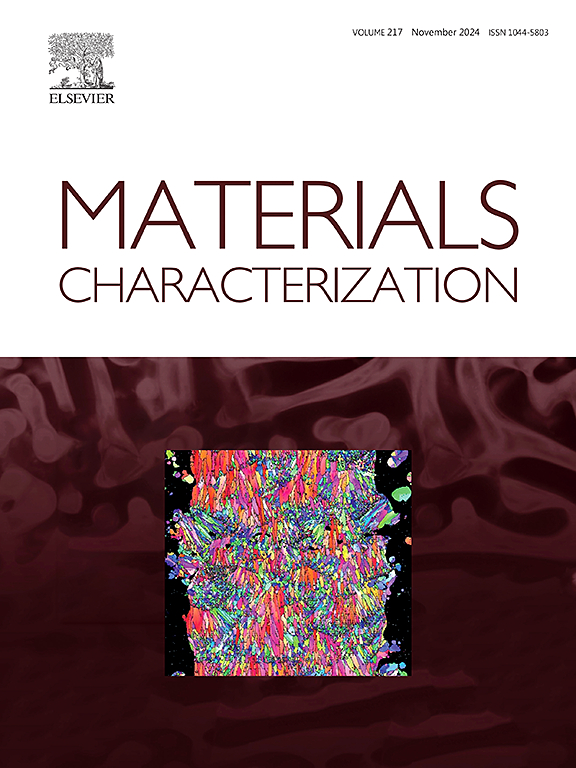Microstructure evolution and creep behavior of Inconel 718 alloy subjected rolling process
IF 4.8
2区 材料科学
Q1 MATERIALS SCIENCE, CHARACTERIZATION & TESTING
引用次数: 0
Abstract
The Inconel 718 alloy is extensively utilized in aerospace applications due to its exceptional creep resistance. The impact of the rolling process on the evolution of the microstructure and creep properties of the alloy necessitates a thorough investigation. In this study, a comprehensive analysis was conducted to compare the microstructure, creep behavior, and damage mechanisms of Inconel 718 alloys subjected to varying degrees of rolling deformation. The results show that the strain energy increases with rolling deformation, enhancing the driving force for δ phase formation during subsequent heat treatment. This promotes the precipitation of the δ phase, resulting in a reduction of the γ” phase within the alloy. Furthermore, the grain rotation mechanism induces a transition from random to preferred crystallographic orientation in the microstructure after creep deformation. Specifically, grains initially aligned along the 〈110〉 // rolling direction (RD) undergo rotation to 〈100〉 // RD and 〈111〉 // RD orientations, leading to a reduction in the <110> fiber component and an increase in the <100> and < 111> fiber components. Additionally, increased rolling deformation promotes stress concentration, elevates the kernel average misorientation (KAM) value, increases the prevalence of cleavage surfaces, and enhances the tendency for brittle fracture. Strict control over rolling deformation is crucial, as excessive deformation can markedly degrade creep properties. This study establishes a theoretical framework for optimizing the production of Inconel 718 alloys with superior high-temperature performance.
求助全文
约1分钟内获得全文
求助全文
来源期刊

Materials Characterization
工程技术-材料科学:表征与测试
CiteScore
7.60
自引率
8.50%
发文量
746
审稿时长
36 days
期刊介绍:
Materials Characterization features original articles and state-of-the-art reviews on theoretical and practical aspects of the structure and behaviour of materials.
The Journal focuses on all characterization techniques, including all forms of microscopy (light, electron, acoustic, etc.,) and analysis (especially microanalysis and surface analytical techniques). Developments in both this wide range of techniques and their application to the quantification of the microstructure of materials are essential facets of the Journal.
The Journal provides the Materials Scientist/Engineer with up-to-date information on many types of materials with an underlying theme of explaining the behavior of materials using novel approaches. Materials covered by the journal include:
Metals & Alloys
Ceramics
Nanomaterials
Biomedical materials
Optical materials
Composites
Natural Materials.
 求助内容:
求助内容: 应助结果提醒方式:
应助结果提醒方式:


